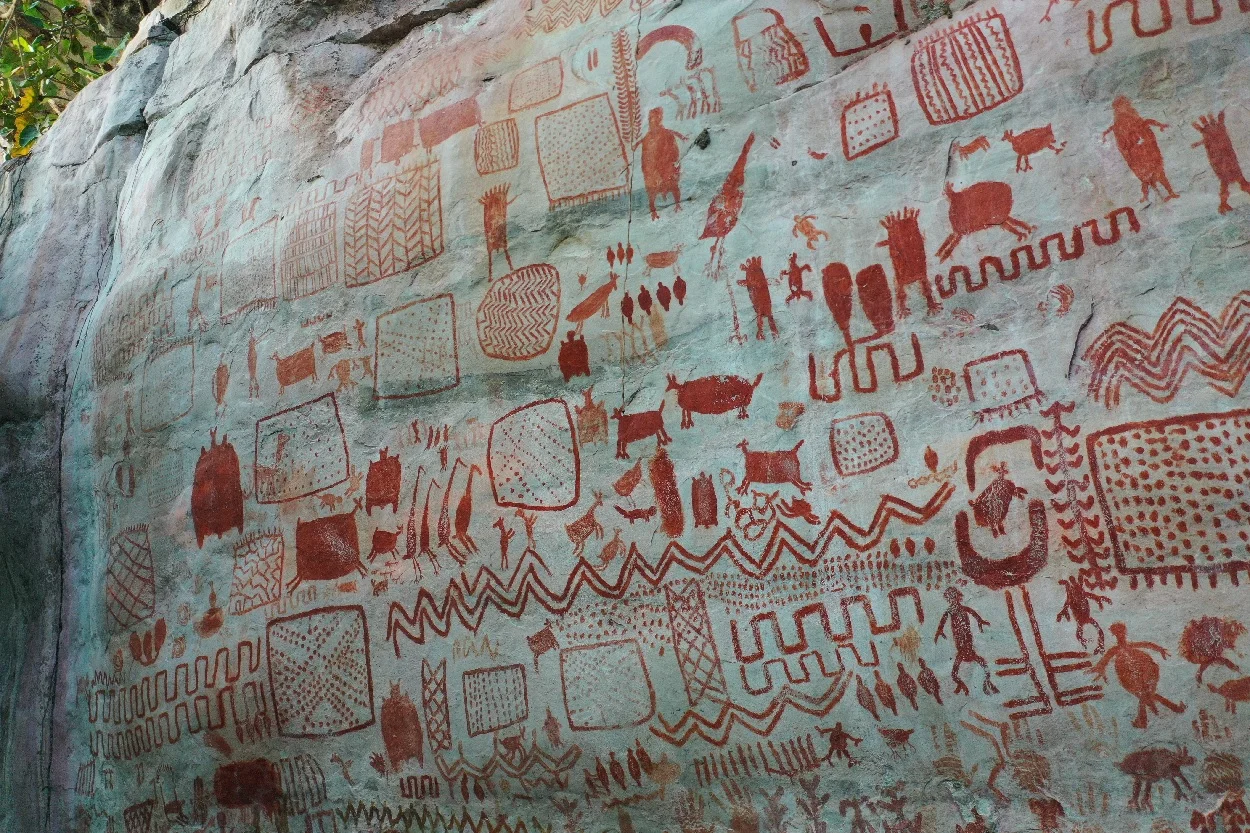A study of rock art in the Colombian Amazon is providing new insights into the complex relationship between the region’s first settlers and the animals they encountered.
The study, published in the Journal of Anthropological Archaeology, analysed rock art images in the Cerro Azul, a series of rocky outcrops and galleries that served as a canvas for painting rock art over thousands of years.
“These rock art sites include the earliest evidence of humans in western Amazonia, dating back 12,500 years ago,” says Dr Mark Robinson, Associate Professor of Archaeology in Exeter’s Department of Archaeology and History. “As such, the art is an amazing insight into how these first settlers understood their place in the world and how they formed relationships with animals.”
As part of the study, the researchers also studied zooarchaeological remains from nearby excavations, indicating that the early settlers had a varied diet of fish, mammals, and reptiles.
However, the proportions of animal bones do not align with the frequency of the animals depicted in the art, implying that the ancient artists did not depict the animals they frequently ate.
“The context demonstrates the complexity of Amazonian relationships with animals, both as a food source but also as revered beings, which had supernatural connections and demanded complex negotiations from ritual specialists,” said Dr Robinson.
A total of 3,223 images were catalogued using drone photogrammetry and traditional photography. The images were categorised by their form, with figurative images being the most commonly occurring, contributing 58% of the total. More than half of these related to animals. At least 22 different animals were identified, including deer, birds, peccary, lizards, turtles, and tapir.
The diverse array of animals represented in the art and the archaeological remains demonstrates a broad understanding and exploitation of a multitude of environments in the region, including savannah, flooded forests and rivers.
Dr Javier Aceituno, of Universidad de Antioquia, Medellín. “They had intimate knowledge of the various habitats in the region and possessed the relevant skills to track and hunt animals and harvest plants from each, as part of a broad subsistence strategy.”
Header Image Credit : University of Exeter
Sources : Animals of the Serranía de la Lindosa: Exploring representation and categorisation in the rock art and zooarchaeological remains of the Colombian Amazon. https://doi.org/10.1016/j.jaa.2024.101613





